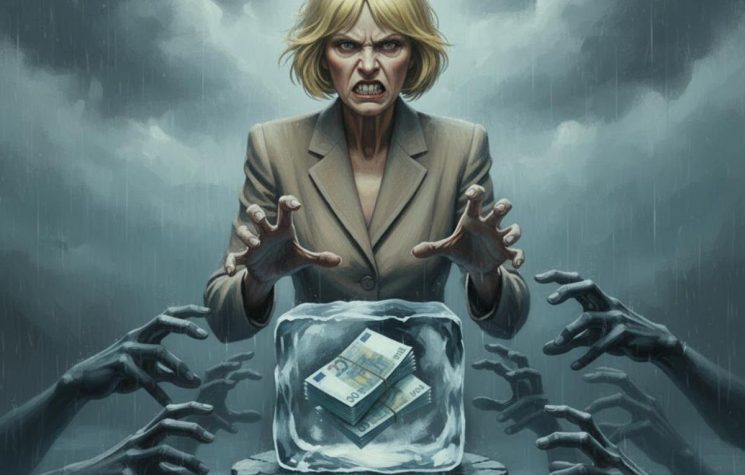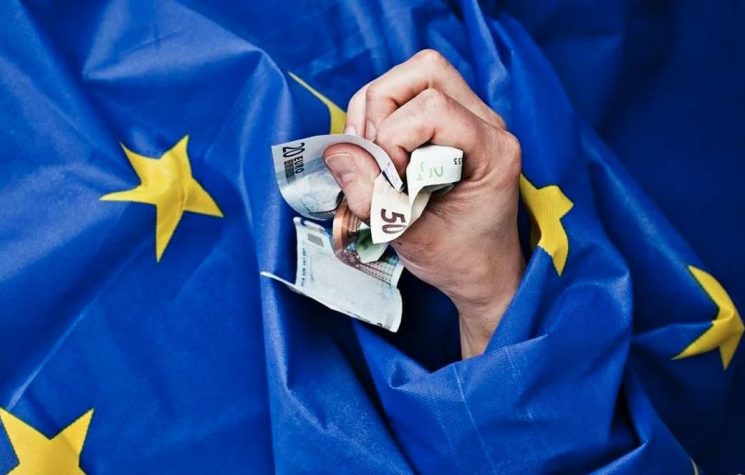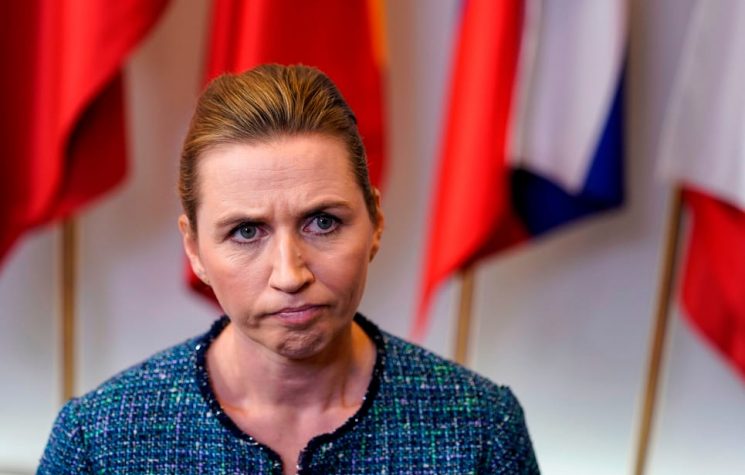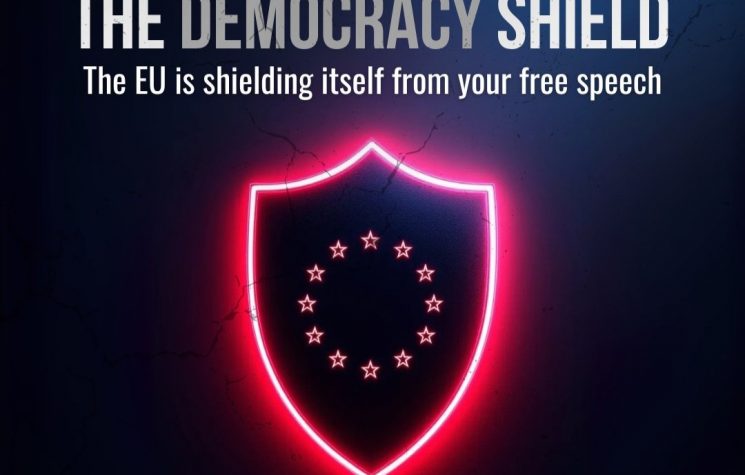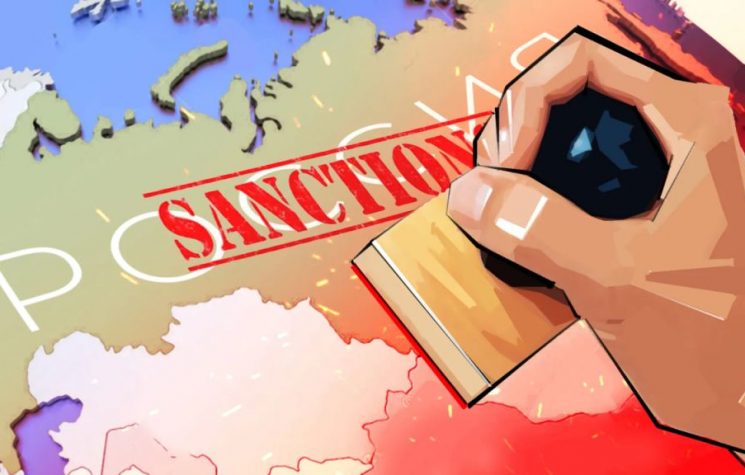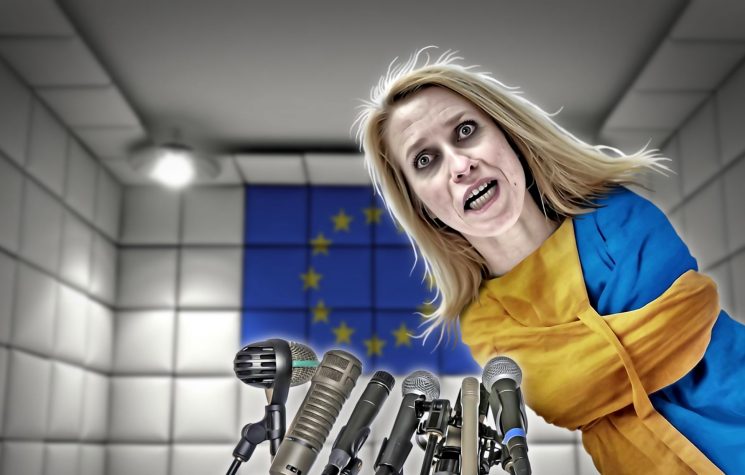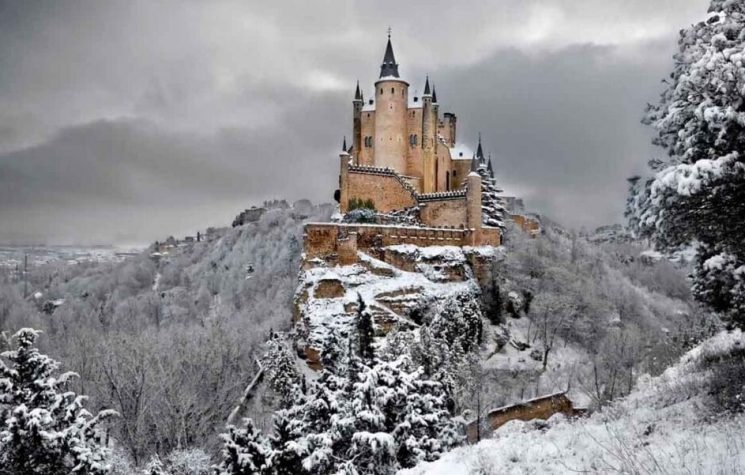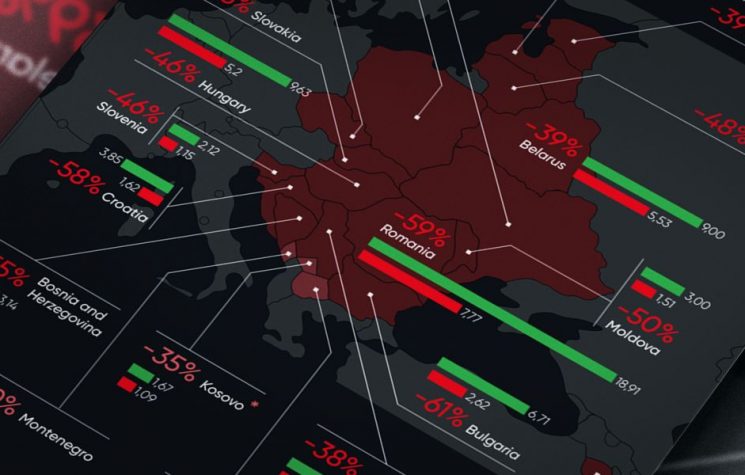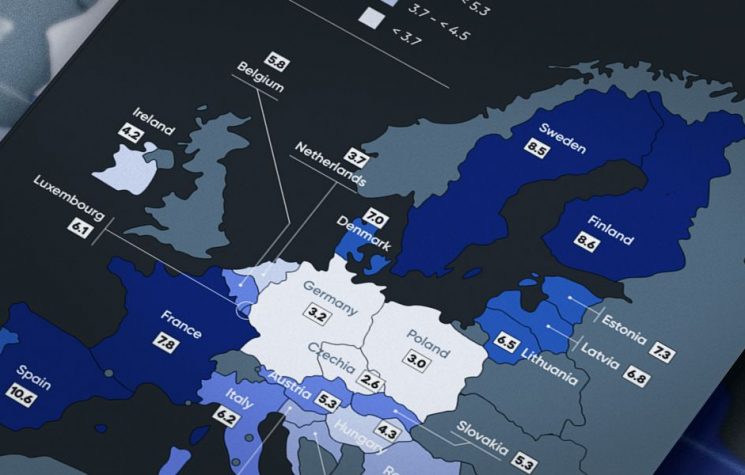The good news is that it appears to be past its apogee. The bad news is that the harm it has wrought will undoubtedly endure for yet a long time.
Join us on Telegram![]() , Twitter
, Twitter![]() , and VK
, and VK![]() .
.
Contact us: info@strategic-culture.su
In April 1951 the European Coal and Steel Community was launched as a deceptively benign and unassuming precursor to the nightmare known today as the “European Union.” The Coal and Steel Community was presented to European nations (France, West Germany, Italy, Belgium, Netherlands, and Luxembourg) exhausted by the recently ended war as a significant step toward reconciliation, cooperation, and the enduring peace that they longed for.
The project, which ultimately morphed into the framework for a European superstrate which bears no resemblance the embryo that had been launched under false pretenses, received its initial impetus from a plan laid out in May 1950 by the French foreign minister Robert Schuman. As might be expected, the Schuman Plan was wisely reticent about the ultimate objectives, which are only now discernible, when analysed in the retrospect of many decades. It stressed non-controversial topics such as peaceful cooperation, which most Europeans naturally yearned for after experiencing two destructive wars. The fact that traditional European rivals and generators of many past conflicts, France and Germany, were co-opted to stand behind the scheme to pool French and West German coal and steel production under a single authority, with suggestions of better things to come, in order to foster economic growth and prevent future wars, instilled trust in the cooperative effort. It was a noble sounding undertaking which appeared to align former rivals and enemies economically, thus eliminating a major root cause of future conflicts. Tight political integration and thoroughgoing cultural reformatting, which was the real objective all along, were never elaborated in detail. Those subjects were discretely mentioned in esoteric pronouncements that few took seriously. No red flags were raised however because for a long time the true objectives of “European integration” were kept under wraps.
What we know today as the European Union, it now seems reasonable to say retrospectively, was fully envisioned from the start as one of the stages of European integration by the elitist nomenklatura which was guiding the post-war destiny of European nations. However, the particulars of their esoteric agenda were never openly publicised because they would have made the still unbrainwashed Europeans of that bygone era highly uncomfortable, probably arousing considerable resistance.
The European Union’s foundations, which go back to the innocuous Coal and Steel Community, were laid by way of deception to serve ultimate purposes understood only by the initiated, but unintelligible to the masses of the profane.
In its next incarnation, which was the European Community founded in 1957, the project was taken to the next level of integration, at that time still stressing primarily the economic dimension. The timeline is very important in order to understand the logic of these events. The founding of the European Community coincided with the intensification of the Cold War and rivalry between ideologically competing blocs. The decision was taken somewhere in the upper political echelons of what was then, as it is still today, the collective West to turn the European Community of “free enterprise” nations into a model. The prosperity and relative liberty that model showcased were meant to make the rival Eastern bloc system appear singularly unattractive by comparison, at least in purely materialistic terms.
As can be appreciated in retrospect, that strategy worked extraordinarily well to demoralise the Eastern bloc, in particular the populations of countries that came under Soviet influence after World War II, but also not excluding many inhabitants of the USSR. An attractive and undeniably prosperous welfare state system was erected which is perhaps best described as capitalism with a human face. Most of the barbarous features of worker exploitation were seemingly eliminated or ameliorated to the point where in the felicitous West such systemic flaws no longer bothered the working classes. A cohesive society built on democratic principles and social harmony, characterised by a large degree of personal freedom and a lasting promise of shared prosperity, seemed to be evolving rapidly. It was in sharp contrast to the material constraints and authoritarian governance that characterised the rival system that had been established in the East.
But once the “magnet” of the European Community had served its purpose and in combination with the successful co-optation of Eastern European political elites led to the collapse of the Eastern bloc, it quickly became evident that the features of prosperity, relative freedom, and social harmony that had become identified with the Western model were provisional in nature. No sooner did the leadership of the collective West conclude in the 1990s that its main rival had been disposed of and that its dominance was assured without any remaining challengers in sight, than the “human face” model that it had dangled as a lure began hurriedly and ruthlessly to be dismantled. It was triumphantly replaced with some of the most sordid features of predatory liberal capitalism. Again, looking retrospectively, it is now evident that the entire performance, which in its time had impressed the gullible masses, was no more than a cynical показуха (window dressing, dog and pony show), as the Russians, many of whom had also fallen for it, would say.
The stage was now set, in the early 1990s, to raise the European project to an even higher level, which was accomplished with the signing in 1992 of the Maastricht Treaty, followed by a series of additional agreements, establishing the European Union. Conspiratorial discretion about ultimate objectives, which had characterised the project’s evolution up to that point, now gave way to increasingly frank and public admissions.
The gist of those disclosures, fully corroborated by the practical measures that were being implemented, and in some instances imposed, by European Union institutions and officials, was two-fold. First, it was the cultural reconfiguration of the European continent, without consulting those it affected, by uprooting the code of moral values and indeed the world view that had shaped European nations over the last two millennia. The radical rupture that was envisioned by the Project’s directors was fully on display when the Vatican’s suggestion that Christian heritage be explicitly mentioned in founding documents as constituting a fundamental component of the European Idea was summarily rejected. Equally ominous was the practical commitment of central European institutions (resistance from a few member states notwithstanding) to take a benign view of the policy of population replacement. Since the first decade of this century that policy has resulted in the drastic recomposition of the ethnic and religious makeup of the European continent, to the utter and painful detriment of its traditional inhabitants.
In striking ways, the erection of European Union institutions and their stealthy consolidation to the point where the general thrust of the policies that are pursued is no longer subject to successful challenge regardless of how much some European nations or segments of European society might oppose them, recalls the capture of Gulliver by the Lilliputians, while asleep on the beach where he was stranded. In the beginning, Gulliver could have easily fended off his captors and broken asunder the strings with which they were tying him down. But once multiple layers of restraints were firmly in place Gulliver was no longer able to move any part of his body or resist his captors in an effective way.
The European Union system is based on self-perpetuating institutions which operate by issuing arbitrary decrees imposed from on high, formulated by a small cadre of unelected officials. The identical modus operandi, following the same vertical pattern of governance, was incarnated in the corresponding political structures of the Union, which were conceived in the same spirit. The EU Commission, the Union’s principal executive body, consists of unaccountable and unelected commissioners who designate their own successors. The only major institution of the European Union which technically could assert some affinity to democracy, the European Parliament, is in fact a rubber stamp of the executive organs which cannot initiate legislation and lacks authority to ensure the enforcement of the “laws” that it passes. The generally low voter turnout for European Parliament elections is indicative of public disillusionment and the low regard in which that body is held by the population it purports to represent.
The conflict in Ukraine has exposed once again the profoundly undemocratic and unrepresentative nature of the European Union. Without even the pretense of a public debate and acting solely through its unelected policy coordinating bodies, the Union took a peremptory collective stand in disregard of the national interest of the countries composing it and of the opinion of large segments of their population. Elected nation-state governments were mandated to follow those policy guidelines, no nuances being allowed, many against their own better judgement. The complete severance of relations with Russia at energy and all other levels has caused grave economic and other harm to member states. The issuance of such peremptory orders is a telling indication of who the European Union’s self-absorbed leadership clique considers itself accountable to and demonstrates its contempt for the wellbeing of the European nations that it purportedly serves. The acquiescence of most of the dependent nation-state political elites to this and other equally detrimental agendas is also very indicative – of the cesspool of corruption into which Europe has been plunged.
From unassuming beginnings as the European Coal and Steel Community to the present-day European Union, with its ambition of becoming a European super-state, perhaps inspired by the geopolitical fantasies of Coudenhove-Kalergi, the so-called European Project has emerged and taken shape in an atmosphere of double-talk and deception. European nations were never honestly informed by the Project’s ideologues whither exactly they were being led. That omission however can now largely be filled by looking at the Project’s dismal record and its many poisoned fruits.
The good news is that it appears to be irreversibly past its apogee. The bad news is that the harm it has wrought will undoubtedly endure for yet a long time.











